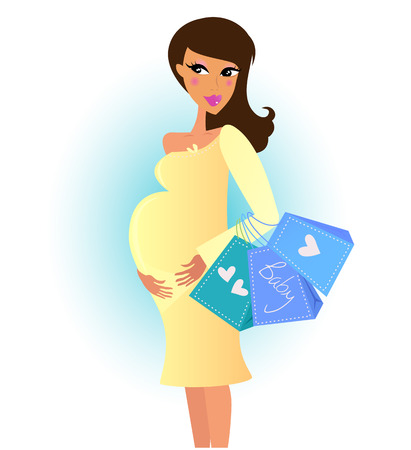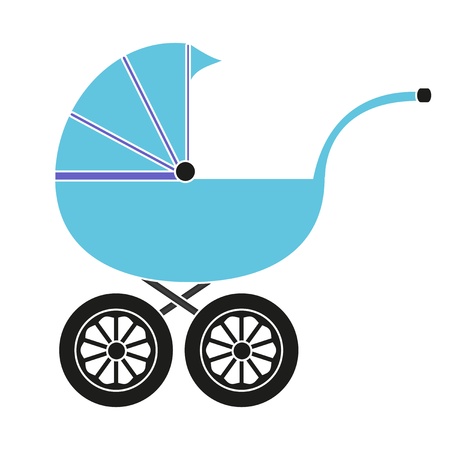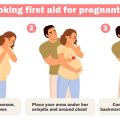Understanding Co-Sleeping: What It Really Means in the UK
As a new dad in the UK, navigating the world of newborn sleep can feel like learning a whole new language. One term you’ll hear over and over is “co-sleeping”—but what does it actually mean for British families? Let’s break it down in simple terms, especially for those of us knee-deep in nappies and late-night feeds.
Co-Sleeping Explained
In the UK, co-sleeping is a broad term that covers any sleeping arrangement where parents and babies sleep close together. There are two main types:
| Type | Description |
|---|---|
| Bed-Sharing | Baby sleeps in the same bed as one or both parents |
| Room-Sharing | Baby sleeps in their own cot, crib, or Moses basket in the same room as parents |
The British Approach to Sleeping Arrangements
Here in the UK, official guidance (like from the NHS) generally recommends room-sharing over bed-sharing for at least the first six months. This means your little one is always within arm’s reach, which can help with night feeds and peace of mind—trust me, nothing beats being able to check on your baby with just a glance when you’re half-asleep at 3am!
Why Parents Choose Co-Sleeping
Many new parents opt for co-sleeping because it makes night-time feeds easier and helps everyone get a bit more rest. Some families choose bed-sharing for bonding or practical reasons (especially during those cluster-feeding phases), while others stick with room-sharing to follow safety guidelines. The key is understanding the difference and making an informed choice that works for your family.
2. Why Parents in the UK Choose Co-Sleeping: Personal Insights
For many new mums and dads across the UK, co-sleeping isn’t just a trend—it’s a heartfelt decision shaped by culture, lifestyle, and those first precious weeks with a newborn. As a first-time dad from Manchester, I’ll be honest: the thought of co-sleeping felt daunting at first. But after a few sleepless nights and chats at baby groups, I realised just how common it is here. Let’s take a closer look at why British families often opt for co-sleeping, blending personal experiences with what the experts say.
Top Reasons UK Parents Co-Sleep
| Reason | Real-Life Example | Expert Opinion |
|---|---|---|
| Bonding with Baby | “Feeling my daughter breathe beside me made our connection so much stronger.” – Laura, mum from Bristol | The NHS notes that close contact can help regulate your babys heartbeat and breathing. |
| Night-time Convenience | “No more midnight trips across the landing—feeding was so much easier.” – Dave, dad from London | The Lullaby Trust highlights that proximity can make breastfeeding less disruptive for parents. |
| Better Sleep (for Some!) | “We all actually slept more once we started co-sleeping.” – Priya, mum from Birmingham | Some UK studies suggest parents may report improved sleep quality when safely co-sleeping. |
| Cultural Tradition | “It’s what my mum did with me back in Liverpool.” – Sarah, second-generation British-Asian parent | Cultural norms in certain communities support shared sleep as part of family life. |
What British Experts Say
The Lullaby Trust and NHS both acknowledge that while co-sleeping is common in the UK, it must be done safely to reduce risks like SIDS. They recommend following safe sleep guidelines (more on this later!). Health visitors often discuss options with new parents during postnatal check-ups, reflecting an openness to different family needs across Britain.
A Dad’s Take: The Honest Bits
If I’m being real, convenience played a massive role for us—especially during those 2am wake-ups. There’s also something incredibly reassuring about hearing those tiny baby snores right next to you. Of course, every family is different; some mates at our NCT group swore by separate cots for better rest. But for many of us, safe co-sleeping ticked all the boxes: bonding, practical night feeds, and just making those early days feel that little bit easier.

3. Staying Safe: Practical Co-Sleeping Guidelines for Newborns
As a new dad who’s been through the sleepless nights, I know how tempting it is to bring your baby into bed just for a bit of rest. But safety has to come first—especially here in the UK, where NHS and Lullaby Trust guidelines offer clear advice to help parents co-sleep without unnecessary risk. Below are some practical, real-life tips to keep your newborn safe while co-sleeping.
Mattress Matters: What’s Best for Co-Sleeping?
The foundation of safe co-sleeping is having the right mattress. UK recommendations are firm and simple:
| Mattress Type | Safe for Co-Sleeping? | Why? |
|---|---|---|
| Firm Mattress | Yes | Reduces suffocation risk; provides flat, stable surface |
| Soft Mattress/Memory Foam | No | Baby can sink in and overheat or suffocate |
| Waterbed or Sofa | No | Unstable and unsafe; increases SIDS risk |
The Safest Sleep Position for Your Newborn
The NHS and Lullaby Trust are crystal clear: always place your baby on their back to sleep, never on their front or side. This applies whether they’re in their cot or sharing your bed. Here’s what’s worked for me and my mates:
- Keep your baby away from pillows, duvets, and heavy blankets – these can cover their face and cause overheating.
- Your baby should sleep next to you, not between two adults, to avoid accidental rolling over.
- If possible, use a bedside crib or Moses basket attached to your bed for an extra layer of safety.
Avoid These Common Hazards
- Never co-sleep on a sofa or armchair – the risk of SIDS goes up massively.
- Avoid co-sleeping if you’ve had alcohol, taken medication that makes you drowsy, or smoked (even if not around the baby).
NHS & Lullaby Trust Recommendations at a Glance
| Practice | NHS & Lullaby Trust Advice |
|---|---|
| Bedding | Keep bedding light; don’t let it cover baby’s head |
| Pillows/Cushions | No pillows or cushions near baby |
| Room Temperature | 16–20°C is ideal; avoid overheating |
I’ll be honest: figuring this all out as a new dad was overwhelming at first. But following these guidelines made bedtime less stressful and helped me enjoy those precious early moments with my little one—knowing he was as safe as could be by my side.
4. Common Hazards to Avoid: British Homes Edition
As a new dad living in the UK, one thing that really hit home for me is how our lovely British houses—cosy as they are—come with their own set of co-sleeping hazards. It’s not just about being careful; it’s about knowing exactly what can go wrong in our unique environment. Here’s what I learned (sometimes the hard way) and what you should absolutely steer clear of:
Thick Duvets and Heavy Bedding
We all love a big, fluffy duvet, especially during those chilly British nights, but they’re a huge no-no when co-sleeping with your newborn. Thick bedding can easily cover your baby’s face or cause overheating. I remember one frosty February night when I woke up to find my little one tangled in the edge of the duvet. It scared me silly! After that, I switched to cellular blankets and dressed my baby in layers instead of cranking up the central heating.
| Bedding Type | Risk Level | Safer Alternative |
|---|---|---|
| Thick duvets | High | Cellular blankets |
| Pillows | High | No pillows near baby |
| Electric blankets | High (overheating) | Layered sleepwear |
Sofas and Armchairs – Hidden Danger Zones
This one caught me off guard. Sometimes, you’re just shattered from sleepless nights and think, “I’ll just have a quick nap on the sofa with the baby.” Don’t do it! Sofas and armchairs are actually some of the riskiest places for co-sleeping, with higher rates of accidental suffocation. A mate of mine nodded off with his newborn on a settee after a long shift—thankfully nothing bad happened, but it was a close call and he woke up in a panic.
Quick Guide: Where NOT to Sleep With Your Baby at Home
| Location | Why Its Risky |
|---|---|
| Sofa/Settee/Armchair | Baby can slip into gaps or get wedged against cushions. |
| Adult Bed with Pillows/Stuffed Toys Around | Suffocation hazard if items block babys airway. |
| Bed Against Wall Without Gap Protection | Risk of baby becoming trapped between mattress and wall. |
Avoid Alcohol & Medication Before Bedtime Feeds
This is one you’ll hear from every health visitor across the UK: don’t share a bed with your baby if you’ve had alcohol or taken medication that makes you drowsy. It might seem obvious, but after a long week and a glass of wine to unwind, it’s easy to forget how vulnerable your little one is.
Real-Life Story: Learning the Hard Way
I once chatted to another dad at our local NCT group who admitted he’d fallen asleep with his baby on his chest after taking cold medicine—he didn’t wake up for hours and only realised how risky it was after reading up on co-sleeping accidents online. We all learn, but let’s try to avoid learning by accident!
Final Tips: Making British Bedrooms Safer for Co-Sleeping Babies
- Keep pets out of the bed – as much as your dog loves cuddles, it’s safer this way.
- Avoid loose sheets; use fitted ones instead.
- If possible, place your mattress directly on the floor to reduce rolling risks.
If you take away anything from this section, let it be this: most hazards are easy to dodge once you know they exist. Stay alert and keep your British bedroom safe for those precious first months together!
5. Useful Co-Sleeping Essentials in the UK
As a new dad navigating night-time feeds and nappy changes, I quickly learned that having the right kit can make all the difference when it comes to safe co-sleeping. The British market is full of practical products designed with both safety and convenience in mind—so here’s my round-up of essentials that helped us keep our little one cosy and secure, while making life just a bit easier for us parents.
Must-Have Co-Sleeping Gear for UK Families
| Product | Description | Why It’s Great for UK Parents |
|---|---|---|
| Bedside Cribs (e.g., SnüzPod, Chicco Next2Me) | Attach securely to your bed, creating a safe separate sleeping space for baby within arm’s reach. | Fits most UK beds and allows easy access for night feeds without bed-sharing risks. |
| Baby Sleeping Bags (Grobags, JoJo Maman Bébé) | Wearable blankets that prevent loose bedding and help maintain safe temperatures. | Popular with UK health visitors; reduce risk of overheating and suffocation. |
| Waterproof Mattress Protectors | Protect your mattress from spills, leaks, or accidents while keeping baby’s sleep space hygienic. | Easy to wash—especially handy during those early months of frequent changes! |
| Room Thermometers (Gro-Egg, Tommee Tippee) | Monitor nursery temperature at a glance with colour-coded displays. | Helps maintain the recommended 16–20°C room temperature advised by the NHS. |
| Cotton Cellular Blankets | Lightweight, breathable blankets ideal for layering if you need extra warmth. | A classic in many British nurseries—easy to wash and safer than duvets or quilts. |
Other Handy Additions
- Nappy Caddies: Keep nighttime changing essentials within reach so you’re not fumbling around in the dark.
- Nightlights: Soft-glow lights make it easier to check on your baby or feed without fully waking everyone up.
A Dad’s Perspective: What Worked For Us
I’ll be honest—I was sceptical about some of these products at first. But after several weeks of bleary-eyed wake-ups, I realised things like a bedside crib and sleeping bag really do take the stress out of co-sleeping. Everything has its place, making night-times smoother and safer for everyone. If you’re setting up your co-sleeping space in the UK, investing in these essentials is well worth it for peace of mind and a bit more rest all round!
6. When and How to Transition: Moving Baby to Their Own Sleeping Space
As a new dad in the UK, one of the biggest milestones for both you and your little one is making the move from co-sleeping to having them sleep independently in their own cot or room. But knowing when it’s the right time—and how to do it without tears (yours or theirs!)—can be a real head-scratcher. Here’s my honest, hands-on advice, plus tips I picked up from other British dads who’ve been through it.
Recognising the Right Time
The NHS recommends that babies sleep in the same room as their parents for at least the first six months. However, every family is different, and you’ll know when your baby is ready if they’re:
- Consistently sleeping longer stretches at night
- Outgrowing their bedside crib or Moses basket
- Showing signs of restlessness during co-sleeping
- You’re waking each other up more often than not
Common Signs Your Baby Is Ready (Quick Reference Table)
| Sign | What It Means |
|---|---|
| Rolling over confidently | Safer in a larger cot with space to move |
| Sleeping 5+ hours at night | Might benefit from fewer disturbances |
| Cot fits safely in own room | Ready for transition to separate sleeping space |
| Your sleep quality is suffering | A sign it’s time for everyone’s sake! |
Step-by-Step Transition Tips from New Dads in the UK
- Create a Cosy Environment: Make their new cot feel familiar with the same sleeping bag or comforter used before. Keep lighting and temperature consistent with what they’re used to.
- Gradual Introduction: Start by letting your baby nap in their new cot during the day while keeping bedtime routines unchanged. This helps them get used to the new space gradually.
- Keep Consistency: Stick to your usual bedtime routine—bath, book, lullaby—even after moving rooms. Familiar steps make them feel secure.
- Stay Close By Initially: If possible, use a monitor and reassure your little one with gentle words if they fuss. Some dads even camped out on the floor for a few nights (a classic British “dad hack”!).
- Praise and Reassure: Celebrate small wins—like a full night in their own cot—with lots of cuddles and positive reinforcement.
- Avoid Sudden Changes: Don’t try this during teething or illness; pick a calm period so it’s less stressful for everyone.
Troubleshooting Common Challenges (Advice from UK Dads)
- If your baby wakes frequently, try a comfort object like a soft toy (as long as it’s safe and SIDS guidelines are followed).
- If you feel anxious, remember—lots of us have felt exactly the same! Use a video monitor for extra peace of mind.
- If sleep regressions hit after moving, stick with your routine; things usually settle after a week or two.
Final Thoughts from One New Dad to Another
No two babies are alike—and neither are any two dads! Trust your instincts, lean on local resources like Health Visitors, and don’t be afraid to chat with other parents at baby groups or online forums. In time, you’ll find what works best for your family—and finally get some well-deserved kip yourself.


